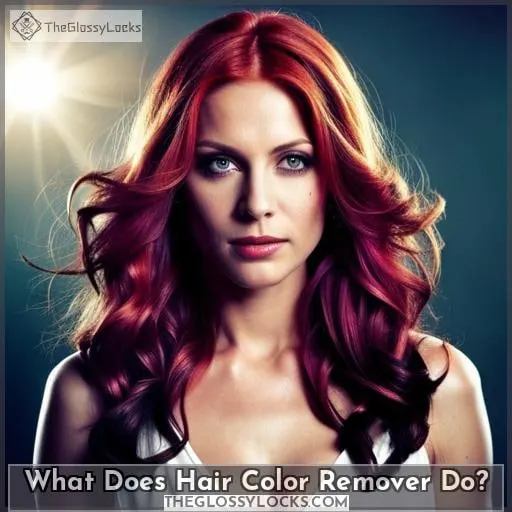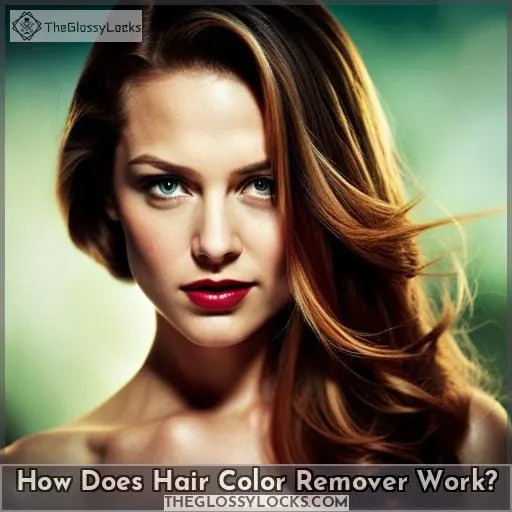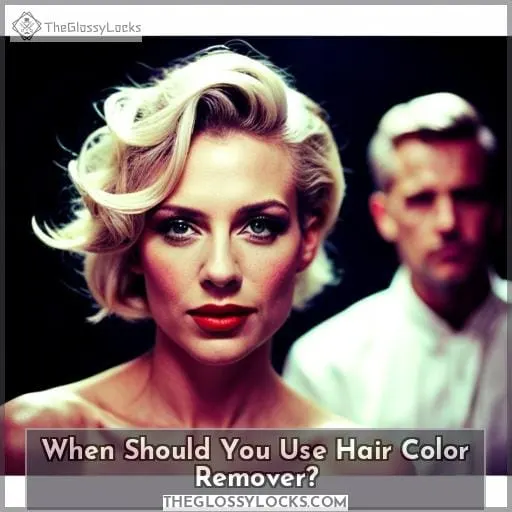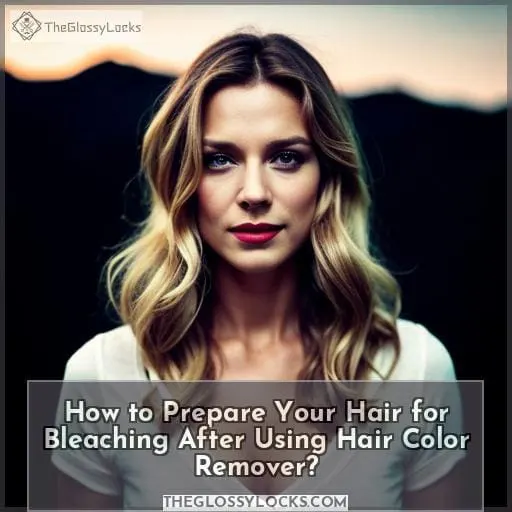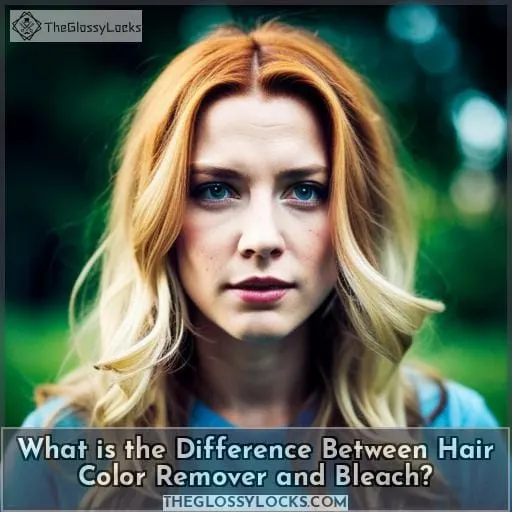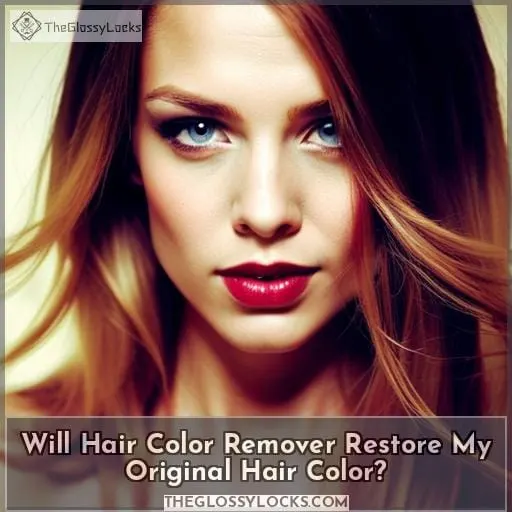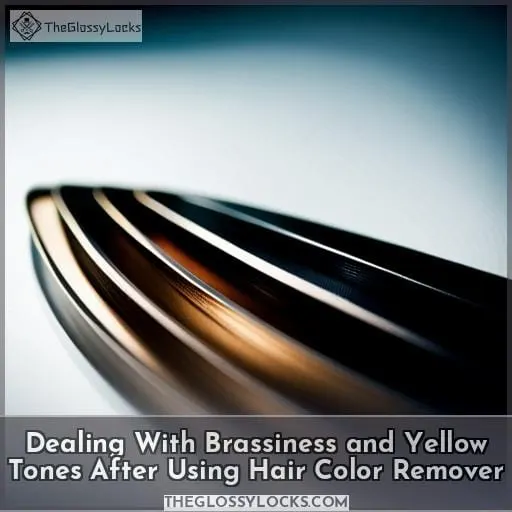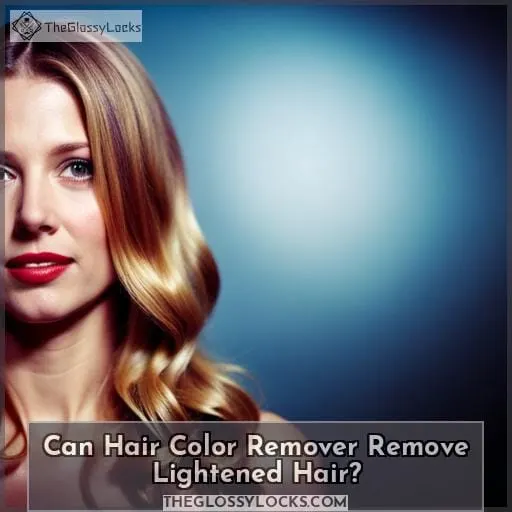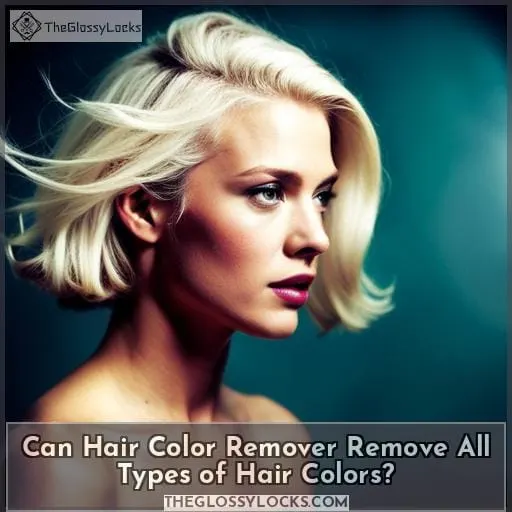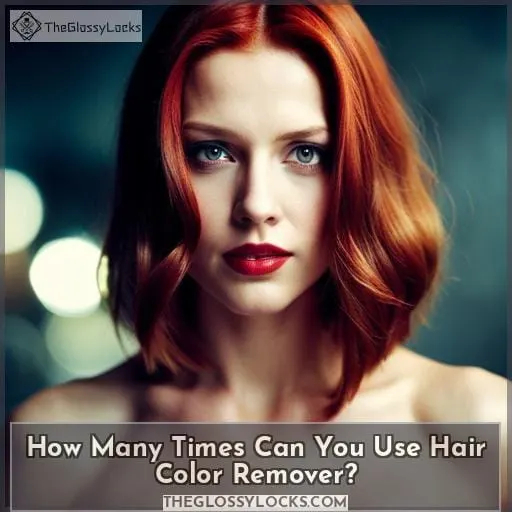This site is supported by our readers. We may earn a commission, at no cost to you, if you purchase through links.
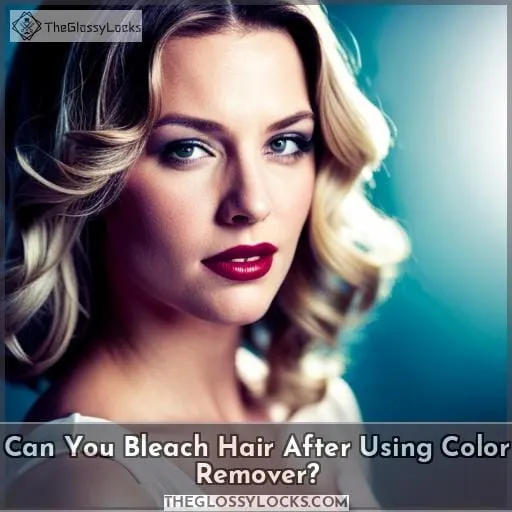
But it’s important that you know the steps and precautions necessary for bleaching after using a color remover.
Here we’ll discuss everything from how it works and when it should be used, all the way through preparing for bleaching and dealing with brassiness afterward.
Table Of Contents
- Key Takeaways
- What Does Hair Color Remover Do?
- How Does Hair Color Remover Work?
- When Should You Use Hair Color Remover?
- How to Prepare Your Hair for Bleaching After Using Hair Color Remover?
- What is the Difference Between Hair Color Remover and Bleach?
- Will Hair Color Remover Restore My Original Hair Color?
- Dealing With Brassiness and Yellow Tones After Using Hair Color Remover
- Can Hair Color Remover Remove Lightened Hair?
- Can Hair Color Remover Remove All Types of Hair Colors?
- How Many Times Can You Use Hair Color Remover?
- Conclusion
Key Takeaways
- Wait 7-10 days after using a color remover before bleaching.
- Consult an experienced professional before bleaching post-color removal.
- Deep conditioning and professional consultation are essential.
- Minimize heat styling tools before bleaching.
What Does Hair Color Remover Do?
You can strip away unwanted artificial hues with color remover, leaving your natural shade intact – like a butterfly emerging from its cocoon. Hair color remover benefits include restoring the original hair color and it is useful for fixing undesirable box dye results or as a pre-treatment before recoloring.
It’s important to wait 7-10 days after using a color remover prior to bleaching. Immediate bleaching post-color removal should be done by an expert.
The process of removing added dyes is different than that of bleach, which affects both natural and artificial pigments in the strands, causing breakage and other damages if not used correctly. Restoring your original hue depends on past coloring history. Frequently colored manes may result in lightened natural shades, while brassiness or yellow tones require toner or re-coloration afterward.
Additionally, due to the potential damage involved when using bleach after applying this product, it’s best avoided unless advised otherwise by an experienced professional stylist/colorist who knows what they are doing! Finally, remember that every individual experiences different results depending on their particular haircare needs, but being prepared beforehand will help you achieve optimal outcomes each time.
How Does Hair Color Remover Work?
Swiftly restoring your original hue, hair color remover strips away artificial pigments to reveal the natural shade beneath. With a few simple steps and precautions, you can safely bring back your desired hair color without damaging it like bleach does.
Hair Color Remover Process:
Color removers are usually applied in sections with gloves on and left for a specific amount of time before rinsing out thoroughly. It’s important not to overprocess or leave them on too long, as this could cause damage or unexpected results.
Benefits:
Unlike bleach, which removes both natural and added pigment, color remover only works on artificial colors. This means that your natural hair tone is preserved while unwanted box dye gets stripped off easily!
Tips:
Use professional products designed specifically for their brand’s colors. Avoid using metal dyes since they can be hard to remove. Make sure that you rinse thoroughly after application. Wait at least 48 hours before recoloring post-processed hair.
Safety Measures:
Patch test any product first that will come into contact with the skin/scalp, including developer mixed with bleaching powder, etc. Wear protective clothing, such as an old t-shirt, when coloring. Use Olaplex treatments during processing time if possible – they help protect and revitalize colored strands from excessive heat and chemicals used throughout the bleaching process!
When Should You Use Hair Color Remover?
If you’re dealing with unwanted hair color, a color remover can be used to help restore your original look. Before bleaching, however, it’s important to properly prepare your hair for the process by consulting a professional and minimizing heat tool use.
Removing Unwanted Hair Color
To get rid of unwanted hair color, try using a color remover. This product can strip away artificial pigment without causing damage to your hair. It is especially useful for correcting box dye results or preparing your hair for recoloring.
If you decide to bleach your hair after using a color remover, it is important to have a professional supervise the process. Additionally, toning your hair after color removal is crucial to prevent the development of orange tones.
The frequency of color removal treatments depends on your individual coloring history. Proper rinsing is key to achieving the desired result, so make sure to wait at least 48 hours before re-dyeing your hair.
For added protection, it is recommended to minimize the use of heat styling tools before bleaching. It is also advisable not to wash your hair on the day of the color removal application. Prior to the treatment, you can start using hair masks or oils to nourish and prepare your hair.
When using color removal products, it is best to use specific brand products for optimal results.
Preparing for Bleaching
Before embarking on the bleaching process, it’s important to properly prepare your hair with deep conditioning masks and oils. This will help protect it from damage during the bleaching process and aid in its recovery afterwards.
A consultation with a professional is also recommended before proceeding, as they can advise on proper application techniques for best results. Additionally, minimize heating tool use prior to using color remover or bleach. Wait at least 48 hours after removing color before recoloring or toning.
Avoid protection products that contain silicones and sulfates. Don’t wash hair on the day of coloring/bleaching for added protection. Color removers remove artificial pigment but lack bleaching properties, so bear this limitation in mind when choosing shades to dye post-treatment.
How to Prepare Your Hair for Bleaching After Using Hair Color Remover?
When considering bleaching your hair after using a color remover, it is important to seek professional consultation and allow ample time for the hair’s recovery. Before attempting any kind of bleaching process, make sure that you have given your tresses plenty of time to rest and recover.
This will ensure that the chemical processes do not damage or over-stress your locks.
Consultation With a Professional
It’s important to consult with a professional before bleaching for the best results and protection of your hair. An expert can assess the current color, provide guidance on bleaching advice, and ensure optimal salon expertise.
With their help, you’ll be able to properly use hair color remover without causing damage or needing frequent correction treatments later on.
Allowing Time for Hair Recovery
Allow your hair time to recover after using color remover; give it a few days before you start bleaching. Hair health should be taken into account when considering post-remover bleaching, as the process can cause damage.
Allow at least 48 hours for the results of color removal to become visible and another 7-10 days for full recovery before beginning any further treatment. This will ensure that your desired bleach result is achieved without causing additional damage or compromising the previously attained color remover results.
Avoiding Heat Styling Tools
To avoid damaging your hair, try to minimize the use of heat styling tools prior to bleaching:
- Protect hair texture by going heatless.
- Use deep conditioning treatments and masks for color maintenance.
- Try out different styles that don’t require high temperatures.
- Don’t forget manufacturer’s instructions!
- Consider using a toner post-bleach for extra protection against damage from color remover and bleach. With these tips in mind, you can protect your locks while achieving the desired results with minimal hassle!
Skipping Hair Washing on Bleaching Day
On bleaching day, skip washing your hair to add extra protection. Skipping the wash ensures that natural oils remain in the scalp and strands, providing some additional protection against damage caused by bleach.
Post-color removal toning can also help counteract warmth from previous developer use.
Using Special Hair Care Products
Try using special hair care products, such as Olaplex, a week before bleaching to help protect and revitalize your strands. After using color remover, wait at least 48 hours before reapplying any product.
The manufacturer’s instructions should be followed closely for best results; otherwise, you risk damaging your hair with bleach or other chemicals.
What is the Difference Between Hair Color Remover and Bleach?
You may be wondering what the difference is between a color remover and bleach. Color removers are designed to strip away artificial colors from hair, leaving behind the natural hue intact. Bleach, on the other hand, works differently—it lightens both artificial and natural pigments in your hair, which can cause damage if not done properly.
When bleaching after using a color remover, it’s important to consider the following:
- Bleaching Considerations – Wait 7-10 days before bleaching so that you don’t further damage your hair with too much chemical processing at once.
- Color Removal Success – Depending on how many times you have colored or highlighted your hair previously, it will affect whether or not all of the dye has been successfully removed.
- Post Removal Toning – For extra warmth handling, opt for toning only if satisfied with current shade levels. Remember to wait 48 hours before doing this as hair is highly absorbent post-Color Removal.
With these tips in mind, achieving beautiful results when recoloring after using a Hair Color Remover should be easy!
Will Hair Color Remover Restore My Original Hair Color?
After using a hair color remover, you may be wondering if it will restore your original hair color. The answer is not always clear-cut as the results of a color remover vary depending on factors such as your previous coloring history and the type of dye.
While some people have had success restoring their natural shade, others experienced permanent lightening due to frequent prior use of artificial dyes. To get the best results from using a hair dye remover, consult professionals beforehand and follow tips for proper application.
For example, avoid using heating tools before bleaching and wait at least 48 hours after removing color before recoloring or toning. It’s also important to note that while bleach removes both natural pigment and added colors, unlike regular dye removal products which only target artificial pigments.
Therefore, it should be used with caution when trying to restore an original look.
Dealing With Brassiness and Yellow Tones After Using Hair Color Remover
If you’ve used a color remover, brassy or yellow tones may require toning to achieve desired results. Toning techniques can help remove any unwanted warmth or discoloration from your hair after using a color remover.
Post-removal care is important for achieving the best possible outcome; and brassiness solutions like ash-toned colors are ideal for countering orange hues that sometimes appear after color removal. You can also opt for professional services such as highlighting, lowlighting, and balayage to further refine your look without having to bleach again.
For those who would rather take matters into their own hands, consider products specifically designed with semi-permanent pigments that provide natural-looking highlights without bleaching agents such as ammonia or peroxide.
If you’re still unsatisfied with the result of your recoloring attempt, try one of these tried and true methods of correcting unsightly brassiness: use an at-home dye kit in an ash shade close to what was removed; have it professionally done by a stylist if necessary; apply deep conditioning treatments regularly between touch-ups so hair stays hydrated throughout the process; lastly, invest in quality products tailored towards helping maintain healthy locks during this transitional period!
With careful planning ahead of time plus following proper post-removal care tips during this delicate stage, you’ll be well on your way towards achieving beautiful, long-lasting vibrant shades while keeping away pesky brassiness issues!
Can Hair Color Remover Remove Lightened Hair?
No matter the situation, color remover cannot remove lightened hair as natural pigments have already been lifted. When attempting to restore your original hair color, it’s important to take into consideration how frequently you’ve colored your locks in the past.
If you find yourself with unwanted brass or yellow tones after using a color remover on bleached strands, toner isn’t an option. The only way to fix this would be through re-coloring with a shade that can counteract any warmth present in your mane.
Hair health should also be taken into account when considering frequency of use. Multiple treatments may cause damage if not done properly and under professional supervision.
To get optimal results from a Color Remover without compromising on hair health or tone accuracy, avoid overusing metal dyes.
Can Hair Color Remover Remove All Types of Hair Colors?
Now you know that hair color remover can be used to remove permanent, fashion, and temporary colors from your hair.
The answer is yes! Color removal strips artificial dyes from the strands, leaving natural pigments intact, even if they are on the darker side. It’s important to note that some color removers contain bleach, which can damage your locks, so make sure you check out all the ingredients before applying it.
However, with proper use and caution, this product could help restore any unwanted results caused by dyeing too dark or using unsuitable colors for your skin tone, etc.
With enough time spent waiting between each session and careful consideration when selecting an appropriate shade for recoloring afterwards (opt for ash-based tones), it will eventually pay off.
How Many Times Can You Use Hair Color Remover?
You can generally use a color remover up to three times, just like an artist with their brush paints multiple layers of vibrant colors onto a canvas. Multiple applications are ideal if you need to gradually remove the artificial pigment from your hair without causing any damage.
When using a color remover, it’s important to follow professional guidance and instructions for optimal results and maximum color longevity. To prevent further hair damage, always wait at least 48 hours before re-dyeing or bleaching after using the product.
Doing so will also help ensure that the natural pigments in your hair remain intact during this process as well as reduce any chance of undesired yellow or brass tones post-color removal which cannot be removed by bleached hair.
Conclusion
It’s understandable if you’re apprehensive about bleaching your hair after using a color remover. But when used properly, a color remover can be an effective tool to prepare your hair for bleaching – allowing you to achieve the look you want without damaging your hair.
As long as you follow the instructions and consult an experienced professional, you can bleach your hair after using a color remover with minimal risk of damage. Remember, patience is key – allow your hair time to recover before bleaching, and you can achieve your desired results with ease.

